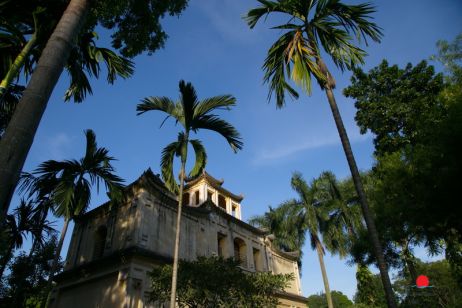One Pillar Pagoda
One Pillar Pagoda, located in Ba Dinh District, is one of the most ancient and famous pagodas in Vietnam, and a prominent cultural and spiritual symbol of Hanoi.
.jpg)
One Pillar Pagoda – located in Ba Dinh District, right in the heart of Hanoi, the One Pillar Pagoda is one of Vietnam’s most remarkable and ancient Buddhist temples. Built in 1049 under the reign of King Ly Thai Tong, the pagoda was inspired by a divine dream in which the Buddha of Compassion, Avalokitesvara, appeared seated on a radiant lotus flower and invited the king to join her. To honor this vision, the king ordered a temple to be built in the shape of a blooming lotus emerging from the water. The pagoda rests on a single stone pillar rising from the Linh Chieu Lake, giving the illusion of a delicate lotus floating on the surface. In fact, the pillar consists of two meticulously joined stone blocks. The pagoda’s gracefully curved roof is covered with ancient tiles and adorned with intricate carvings of “Two Dragons Flanking the Moon” – a traditional motif symbolizing wisdom, protection, and aspiration.
.jpg)
Over the centuries, the temple was known by various names such as Lien Hoa Dai ("Lotus Blossom Shrine") and Dien Huu Pagoda, which translates to “Long-lasting Blessing.” The temple’s layout is a harmonious expression of Eastern philosophy: the square-shaped sanctuary (representing yin) is balanced by the round pillar (representing yang), reflecting the unity of earth and sky, of balance and continuity. Despite being destroyed by the French colonialists in 1954, the pagoda was carefully restored by the Vietnamese government. Today, it serves as a spiritual site for prayers and blessings and stands as a symbol of national identity, artistry, and faith. In 2012, the One Pillar Pagoda was recognized by the Asia Book of Records as “The Most Unique Architectural Pagoda in Asia”, and has since become a must-visit landmark in Hanoi for both local and international travelers.
.jpg)




.jpg)

-(1).jpg)
.jpg)
.jpg)

.jpg)

.jpg)